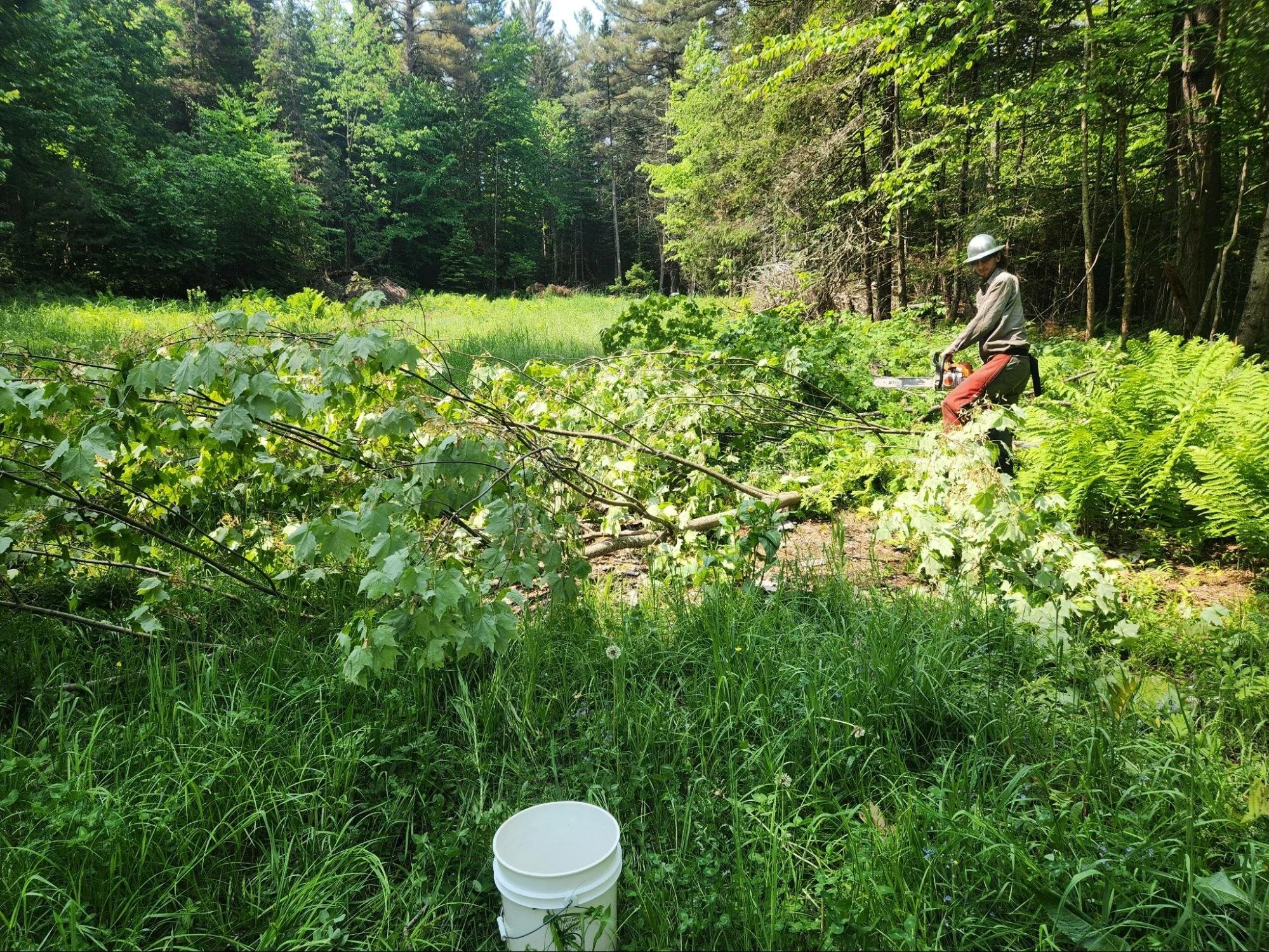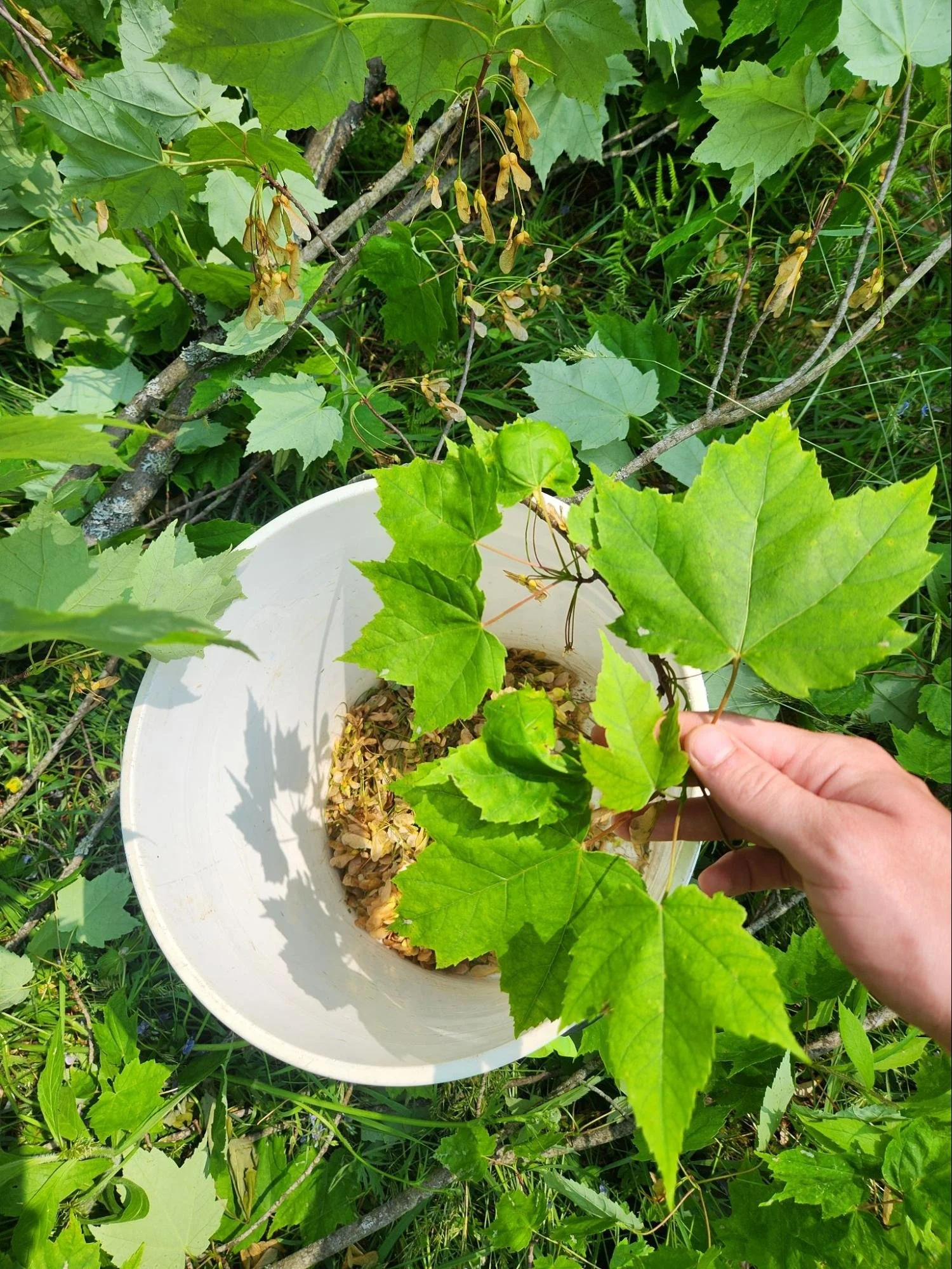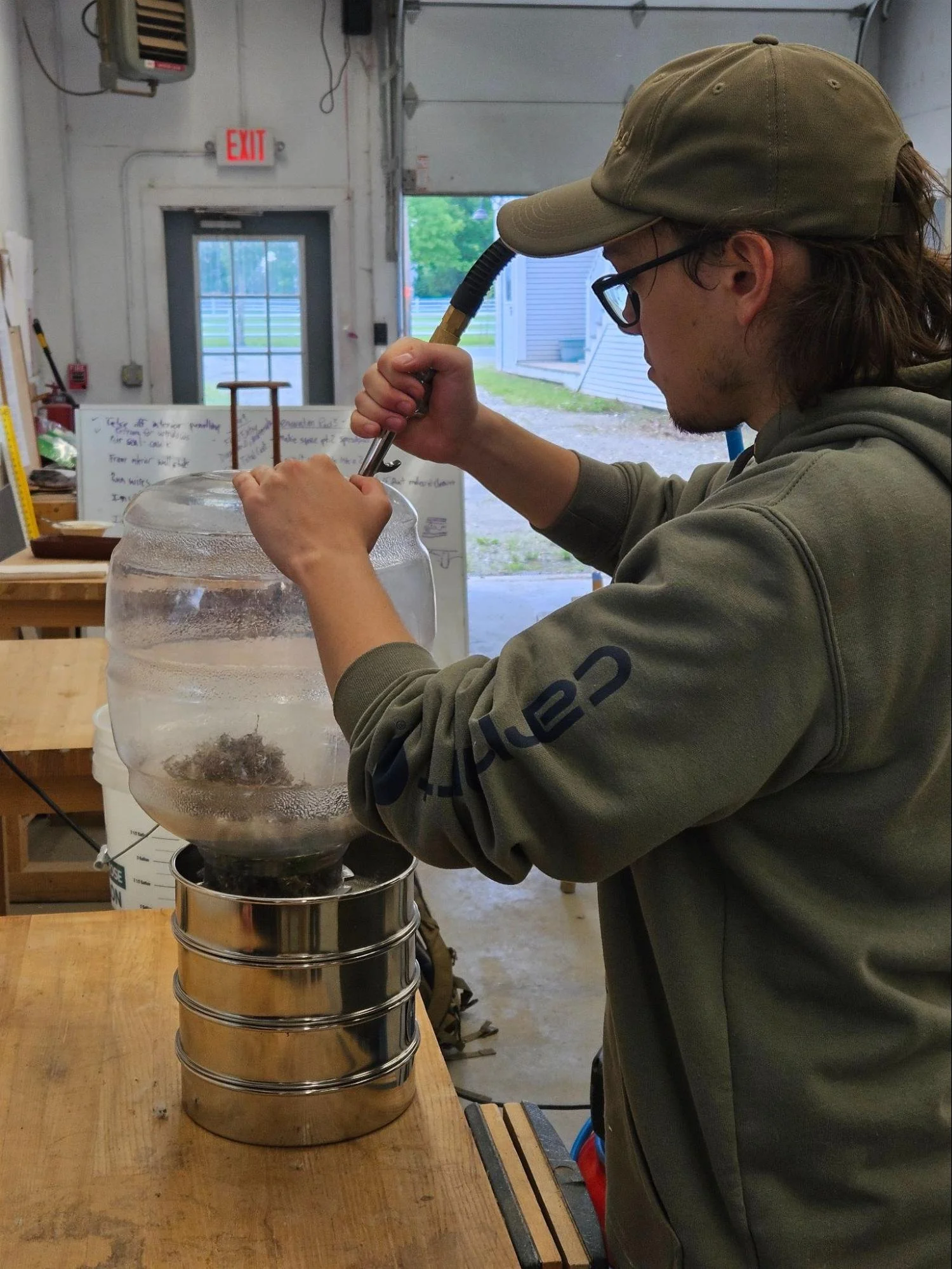Reviving Vermont’s Ecosystems: Tree and Shrub Seed Collection for Biodiversity Restoration
Blog by Sterling Students, Samuel Stover and Finn Horak with an Introduction by Director of Communications and Marketing, Julia Vallera, July 2025
Introduction
This summer, Sterling College students Samuel Stover and Finn Horak partnered with the NorthWoods Stewardship Center (NWSC) as part of their Ecology and Land Management Internship. Under the guidance of a team of riparian restoration professionals, they spent several weeks learning how to collect and sort seeds from mature trees and shrubs that play a key role in Vermont’s ecological restoration efforts.
Throughout this multi-step process, Sam and Finn developed skills in plant species identification, seed collection techniques, and methods for processing and organizing seeds for future use.
Their hands-on experience highlighted the importance of cultivating a diverse mix of native tree and shrub species to support healthy habitats for Vermont’s wildlife. They also witnessed firsthand how thriving ecosystems contribute to flood resilience—reducing the severity and frequency of flood events while helping to minimize erosion.
Internships like this are a vital part of Sterling’s academic program, giving students practical experience, deepening their understanding of local conservation efforts, and equipping them with skills essential to ecological restoration. Congratulations to Sam and Finn on a meaningful and impactful summer—we can’t wait to see where their paths lead next!
Reviving Vermont’s Ecosystems: Tree and Shrub Seed Collection for Biodiversity Restoration
Through the Ecology and Land Management Internship at Sterling College, Samuel Stover and Finn Horak collaborated with NorthWoods Stewardship Center (NWSC), a local research, education and conservation non-profit. During their internship, they met with the organizations’ Riparian Lands team to gather seed from mature trees and shrubs commonly found in riparian areas, such as red maple (Acer rubrum) and shrub willow (Salix spp.). The seeds will be used for future direct seeding as part of the Riparian Lands program restoration effort.
Sam and Finn gathered around 20% of the available seed, so as to not too severely limit the plants natural dispersal quantity. This ratio allows enough seed to disperse and be stored within the local environment, and for an ample amount to still be available to wildlife.
Female catkins (those flower spikes you see in late spring) from Shrub willow (Salix spp.), just barely beginning to put on fluff, were collected along the path located next to Sterling’s Lower Dorms. After a few days of drying, the seed was separated from the fluff using an air compressor and sorting sieves.
Red Maple was gathered from trees carrying a large quantity of seed, which were usually in or adjacent to wet areas. Red Maple (Acer rubrum) is polygamo-dioecious, meaning that while most individual trees produce only male or only female flowers (a trait typical of dioecious species), some trees bear both male and female flowers, but on different branches. Using pole pruners and buckets, Samuel and Finn snipped seed bearing branches and picked off the samaras- the little winged ‘helicopters’ that maple seeds reside in- for later processing.
In one case, a tree needing to be cut on a neighboring property happened to host a large amount of seed. Samuel and Finn helped fell the tree for the collection of a fifth of the total seed available.
After processing, NorthWoods Stewardship Center will disperse the seed directly onto abandoned agricultural land and the banks of streams and rivers. The mixture of tree and shrub seed will help create healthy, diverse ecosystems and habitat for Vermont’s wildlife. These restored riparian areas will also aid in the mitigation of future flooding event damage, decreasing the frequency and intensity of flooding and minimizing potential erosion. Through their collaboration with NWSC, Samuel and Finn gained valuable experience with local conservation efforts and practical ecological restoration methods.



